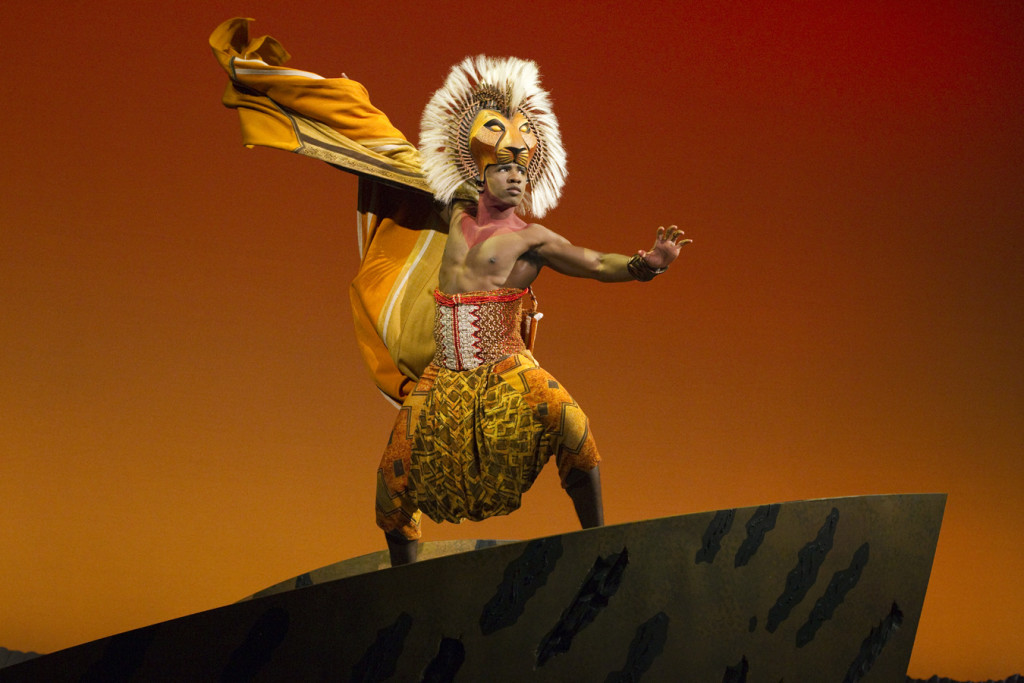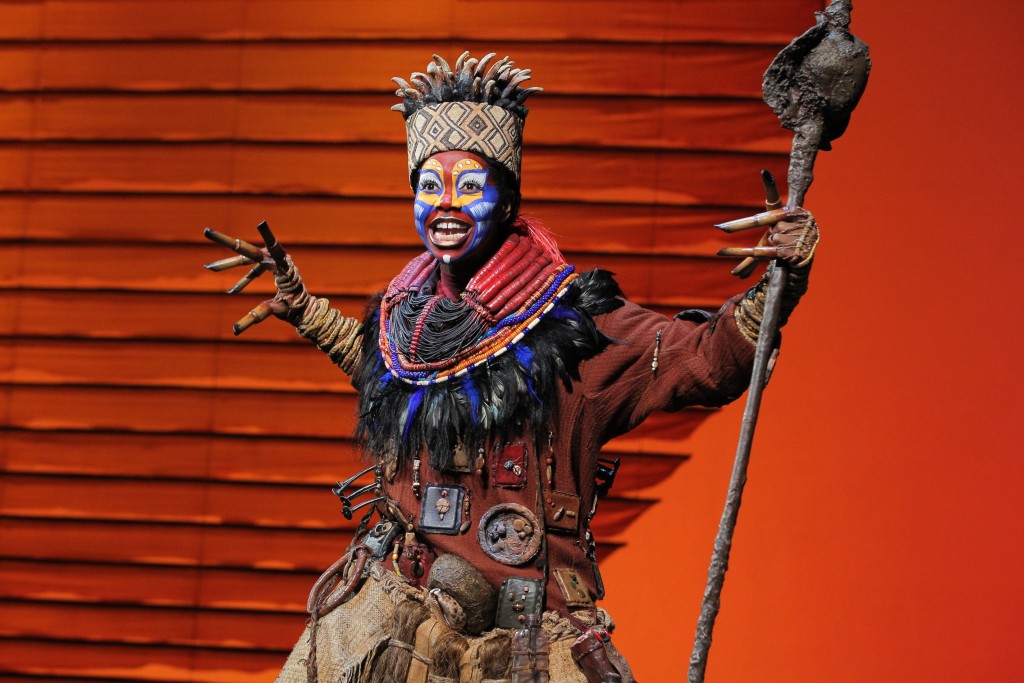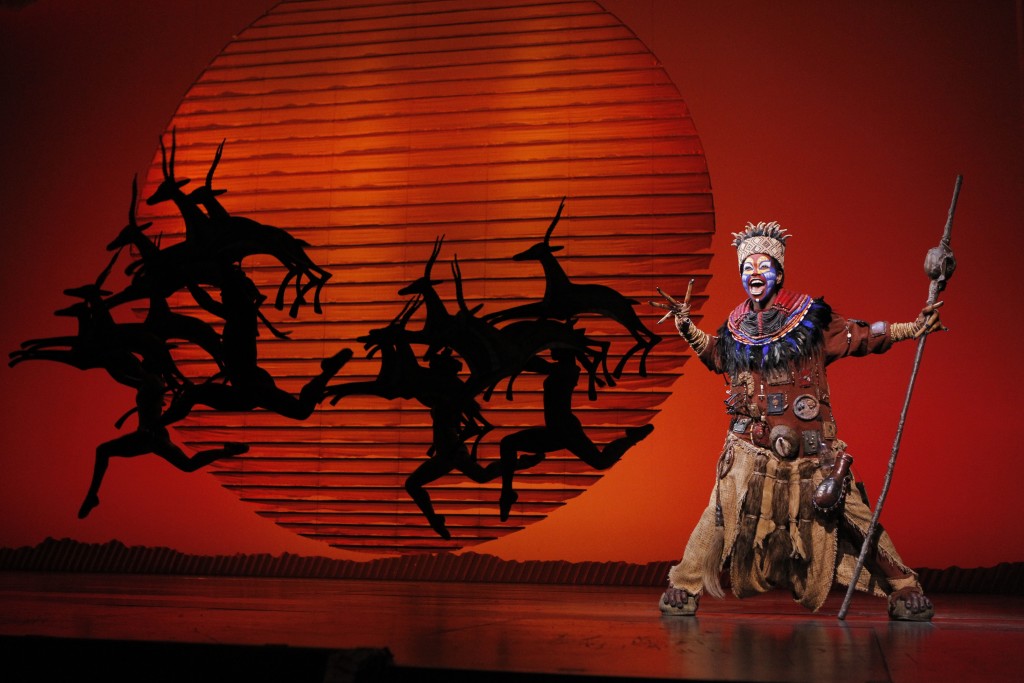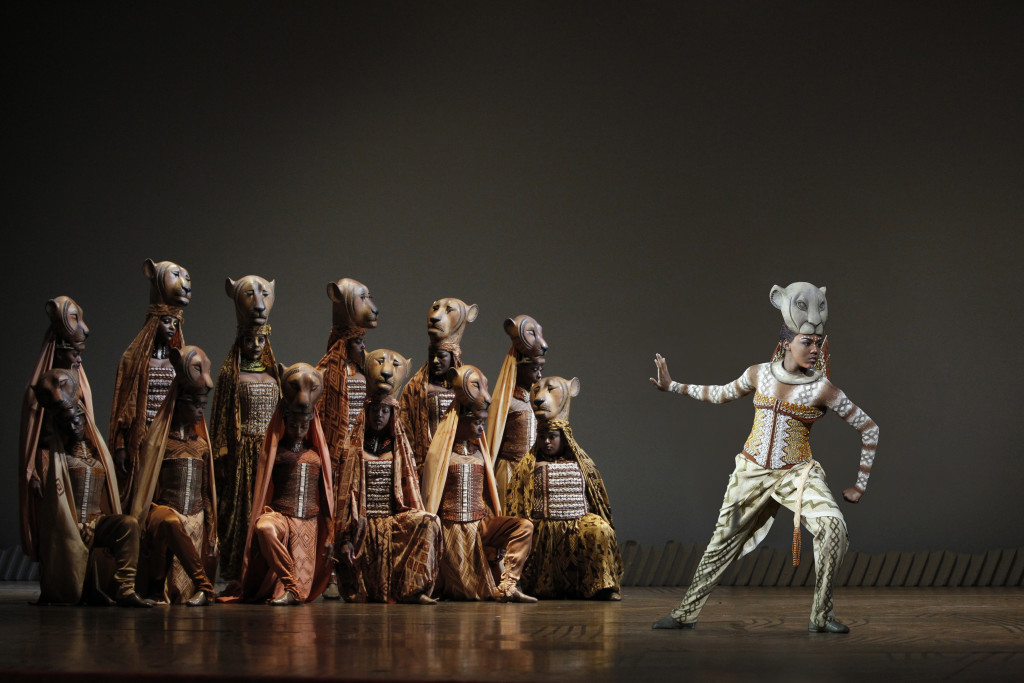
The Lion King musical has remained in New York since its premiere in 1997, making it Broadway’s third longest running show. It has toured all over the world, from China to South Africa, and has now made its way to San Francisco at the SHN Orpheum Theatre. For nearly twenty years and across nearly fifteen countries, The Lion King has resonated with its audiences as more than a typical children’s Disney story, and even more than the Biblical and Shakespearean parallels it so often draws.
Buyi Zama has been playing Rafiki in The Lion King for fourteen years. As she has grown with her role and her extended Lion King family, she sees the way that cast and audience members alike connect to different parts of the story. Teenagers often connect to Simba (DASHAUN YOUNG) and Nala (NIA HOLLOWAY) and the conflict between independence and responsibility to family. Fathers see themselves in Mufasa (GERALD RAMSEY), and children can join Young Simba (BJ COVINGTON/JORDAN WILLIAMS) and Nala (SAVANNA FLEISHER/MEILANI CISNEROS). For Zama, the show paints a portrait of the hierarchies, operations, and importance of the African family.

It is rare to see a non-Western culture so elevated and highlighted in the notoriously white, Western world of Broadway. The Lion King is an exception, blending the stylings of Broadway-pop superstars Elton John and Tim Rice with composer Lebo M.’s South African arrangements. Julie Taymor won Tony awards for both her direction and now famous puppet costume design, which incorporates African styles, patterns, and folk traditions. Rafiki’s costume is inspired by shamans and an African voodoo doll sculpture. She wears a collection of small objects to heal others and communicate with spirits, as well as nails that cover her body that represent the pain she takes from those she heals and puts on herself. Her neckpiece, skirt, and woven baboon behind combine many different African cultures, a syncretism which occurs throughout the show. The heaviest influences come from South African traditions—for example, Rafiki is always played by a South African woman. However, Swahili lyrics and central African dashiki costumes bring some aspects of other African cultures to the performance.
The puppet costumes create a breathtaking spectacle and take the audience to a world somewhere between the real colors, shapes, and aesthetics of Africa and the surreal realm of Taymor’s imagination. Combinations of Swahili, Zulu, Xhosa, and more languages provide a mystic multiculturalism through which the actors can emote differently than they could in English. But the music is where Western and African cultures truly collide and explode. Hans Zimmer’s eurocentric orchestration is tempered by two African drums sets on either side of the stage, which make the heartbeat of the performance constantly visible to the audience. “Grasslands Chant” and “The Lioness Hunt” support some of the most beautiful ensemble choreography in the show, and contrast the inspirational ballad “They Live in You” and electric guitar-ridden “Chow Down.” “Shadowland” and “Endless Night” border on the cheesy coming-of-age turning points of Broadway, but pulse with rhythmic drums and African choral accompaniment. They both are English adaptations of songs from Rhythm of the Pridelands by Lebo M. and Jay Rifkin, the album sequel to film’s soundtrack.

Tim Rice, Mike Mancina, Lebo M., Rifkin, John, and Zimmer are all credited for the music in the stage adaptation. They were all also involved in The Lion King before the musical—something about the music keeps people coming back, even those who created it. For Lebo M., the story and music reflected his own life growing up in South Africa and the larger story of apartheid. Simba, Lebo, Mandela—they had hopes of returning home, and their home communities hoped for them as well.
One of the biggest distinctions between the film and the musical is the opening of Act II, when the cast enters the theater by dancing through the audience in colorful garb. Despite the bright bird puppets looming over them, they are clearly human, for the first and only time in the show. The storyline of The Lion King stops to focus solely on the people’s hopes as they sing the famous “One by One.” In African cultures, music brings hope and lifts spirits. Even in times of darkness and mourning, song and music help people carry on and know they are not alone. This is exemplified in the beautifully staged, multilingual “Rafiki Mourns” in which Rafiki, Young Nala, and Sarabi (SOPHIA STEPHENS) share their grief for Mufasa and Simba through haunting voices. Zama was never directed to perform this song a certain way. Her body and spirit know South African mourning, and it spills out of her with power and rawness.

After fourteen years in The Lion King, the music, singing, and drums remain Zama’s favorite things about it. It provides a mechanism to express things we rarely talk about, especially with children. Death can never be normalized, but expressing the pain also reminds us to keep the spirits and teachings of those who have passed in our hearts. The collaborative, astounding music of The Lion King has the capacity to capture these complex emotions that transcend cultural boundaries. In Zama’s words, “The music just makes me feel alive. When I hear those drums going and I hear all those voices, it’s just…that’s life. That’s life.” The Lion King remains an international success because it tells a relatable story, because it is unique, and because it merges artistic and cultural differences. But it remains in the hearts of those who see it because, in the face of darkness and death, it sings of life.
Images courtesy of Joan Marcus
